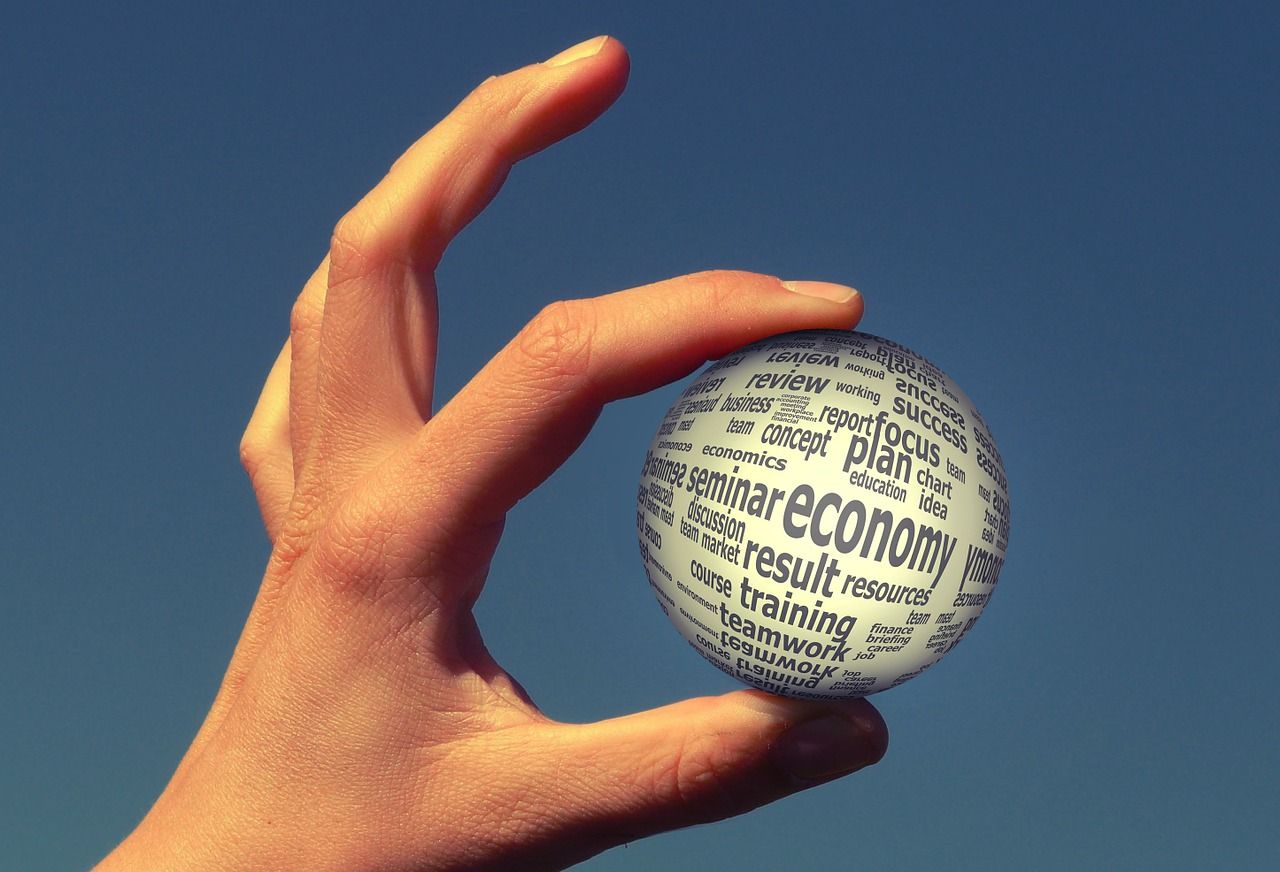The marketing environment is the background for all organizations. Those companies that want to be successful must adapt to current trends and changes in their macro and micro environment. Therefore, it is in their interest to "scan" their marketing environment. What for? On the one hand, to deal with all possible threats, on the other - to take advantage of all available opportunities created by the market.
Internal and external marketing environment
Macroenvironment as a set of external factors
The impact of the marketing environment on the company
Analysis of the company's marketing environment
What is the essential ingredient of a successful business? First of all, good knowledge of customer needs. For this reason, companies should consistently monitor their marketing environment. As it consists of a series of unpredictable forces that surround the company, it is constantly changing. Organizations must therefore have effective tools to track the latest changes in the marketing environment. Why is it so important? About it below.
Do you have effective tools to track the latest changes in the marketing environment?
Let us make this task easier for you.
Marketing environment - definition
The marketing environment is a combination of internal and external forces and factors that influence the company's business activities and its ability to serve customers. The internal marketing environment includes factors such as materials, machinery, employees, money, etc. All of these elements are essential to a successful business. While the company's internal environment can be controlled, the external one is only minimally controllable. Let's get to know both components of the marketing environment one by one.
Internal and external marketing environment
The internal environment is formed by all internal factors and strength of the organization. The marketing environment in this area is under the control of the company, which may change or modify it in accordance with the market needs and business requirements. The main five pillars that make up the internal environment of the organization are:
- money
- workers,
- markets,
- materials,
- equipment.
The internal environment of the organization includes marketing department, sales department, human resources department, or production department. All the components of the internal environment are as important as the external environment, but the former change as the external marketing components change. For example, an organization that wants to remain competitive should upgrade its technology if new technology is introduced to the market.
The external marketing environment consists of all external marketing factors that exist outside the organization. The company has little or no control over them. The external marketing environment can be divided into two categories - micro-environment and macro-environment. Let's take a closer look at each of them.
Components of the company's micro-environment
The micro-environment is also called the immediate, proximal or operational environment. They include all entities with which the enterprise interacts or comes into contact in the course of its daily activities. The micro-scale marketing environment is created, among others, by suppliers who are an essential part of any organization. They provide materials or all kinds of resources needed to manufacture products. Some companies' activities are based on cooperation with market intermediaries who act as an intermediary between the company and its customers, helping the company to distribute its products on the market. All these wholesalers, retailers and distributors are an essential part of the company's activities, as they represent not only its products on the market but also its brand image.
One of the elements that make up the micro-environment of the company are business partners. These are all entities that do business with the company. These include, for example, pr. agency, market research companies, transport companies, etc. Companies do not operate in a vacuum and usually cooperate with at least a few other business entities. At the same time, they take care of b2b marketingto run a successful business.
The next, most important element of business are customers, that is target group. They are the final recipients of the product, and their preferences influence all marketing and business activities of the company. Public opinion also plays a key role in the company's success, as it can build or destroy the company's image on the market, influencing customers' purchasing decisions.

The last, but not the least important element of the micro-environment are competitors. The company's marketing environment should be monitored in this respect. What are the tactics of other companies that sell similar products or belong to the same strategic group in the industry? Have there been any new entities that can compete? These are questions worth knowing the answers to. A positive effect of competing companies is that they develop and try to be better and better to provide customers with more than the competition can offer them.
Macro-environment as a set of external factors
The macro-environment is also called the external environment. It is a set of all factors that influence the behavior of entities operating in the company's micro-environment. One of the elements that has enormous potential to influence an organisation's business and to do it dynamically is technology. As it changes quickly, it creates a number of threats and opportunities for the business environment. The technological environment includes research as well as development in terms of technology, innovation, technology boost and technical alternatives etc.
The macro-scale marketing environment also includes people who create the market as a component of the demographic environment. Marketing segmentation allows them to be characterized on the basis of various factors, such as age, gender, profession, etc. Another component is related to this, namely the socio-cultural environment. They are created by the values, lifestyle, culture, beliefs and prejudices of the company's target audience. The type of component that affects all industries is the economic environment. This factor affects the purchasing power and spending patterns of shoppers. It consists of e.g. interest rates, gross domestic product (GDP), inflation and any relevant economic variables.
What determines the company's marketing environment and its ability to achieve success is the political and legal environment with its laws and regulations. In addition to rules and procedures, the political and legal environment also includes government institutions and pressure groups. The final component of the macro environment is the physical environment in which the organization exists. It takes into account climatic conditions, environmental changes, raw material availability, natural resources, etc.
The impact of the marketing environment on the company
Every business, no matter how big or small, operates in a marketing environment. The marketing environment affects its current and future situation, profits, image and position. The internal and external factors of the business environment are one of the most dynamic aspects of its activity. Their knowledge and understanding are essential for planning the future. In-depth knowledge of the marketing environment helps you recognize and predict what the customer really wants and better understand consumer behavior.
This knowledge is also necessary to create a reliable plan when entering new markets and wanting to take advantage of new trends. The marketing environment creates opportunities, but also threats. In each niche, different players compete for the best place for themselves. Companies that are aware of this and observe what is happening on the market can more easily identify their competitors, as well as learn about their strengths and weaknesses to know how to meet customer needs even better.
Analysis of the company's marketing environment
If a company wants to prosper and stay on the market for a long time, it must understand and be able to analyze the marketing environment and its elements. The term "enterprise marketing environment analysis" refers to a strategic analytical tool that helps identify internal and external environmental factors that affect an organization's ability to operate properly.
Companies should have a structure, culture and policies in place to provide clear guidance to employees. The analysis of the marketing environment must take into account both microeconomic and macroeconomic factors. Its results will be of fundamental importance during the decision-making processes. They also have a large impact on the strategy and subsequent success of the marketing campaign and play an important role in brand building.
Analysis of the marketing environment on the example of a company from the organic food sector
How does the analysis of the marketing environment look like in practice? One of the most frequently used methods of researching the environment is the SWOT analysis. The name SWOT comes from the first letters of the English words: strengths, weaknesses, opportunities and threats. The method is based on the detailed identification and classification of all phenomena and factors that affect the enterprise.
Take a company from the organic food sector as an example. Our company X is engaged in the production of healthy snacks (vegetable chips, bars, etc.). Its aim is to promote a healthy diet. The company assumes that you can live a healthy life without giving up sweets and salty snacks.
In addition, it spreads the belief that keeping a healthy diet outside your home is possible - it is enough to always have a healthy snack with you or choose better quality products in stores. It offers its customers wholesome snacks made of natural, ecological ingredients.

What distinguishes them from others is their taste. The snacks taste similar to their high-calorie substitutes (popular bars, chips, etc.) - all thanks to the use of appropriate spices and the use of innovative recipes. The snacks are low in calories, making them suitable for people on reducing diets. The company X has been very popular on the American market for many years. It has been introduced to the markets of European countries for some time, where it is also successful. The brand is considering entering the Polish market. Snacks would appear in popular discounters and local stores. Internet sales are also considered.
Step by step SWOT analysis
The SWOT analysis will determine the strengths and weaknesses of the brand, as well as opportunities and threats from the environment - those that are beyond the company's control.
Strengths:
- reputation and strong position on the American market and on several European markets,
- high quality of products - the use of natural ingredients,
- low calorie snacks - suitable for people on a diet,
- unique taste qualities,
- decent price,
- distinctive visual identification (interesting product packaging, catchy name that is easy to remember),
- strong company identity and strong DNA,
- excellent financial resources.
Weaknesses:
- lack of recognition on the Polish market,
- no market share,
- dependence on the supplier network.
Chances:
- the possibility of entering a new market and gaining a wide range of new customers,
- market growth,
- increasing incomes of Poles,
- an increase in the frequency of eating meals outside the home,
- the growing popularity of a healthy lifestyle,
- increasing popularity of healthy snacks,
- no clear competitor.
Threats:
- the entry of new competitors on the market or the emergence of substitutes,
- low pace of market development,
- lack of supporters of the snacks offered.
According to the analysis, Brand X has a good starting position. A big plus is the lack of a clear competitor, high quality of products and the growing interest in a healthy lifestyle. The threat is the possibility of the appearance of substitutes offered by local brands (many customers look favorably at products from the local market).
A company, wishing to stand out on the Polish market, should emphasize its strengths. She should also have a strong marketing strategy that will allow her to reach potential customers. In the first phase, the company may focus on online sales - it is important that its strategy includes social media as a means of communication with the target group and a promotion channel.

Analysis of the marketing environment - research methods
The analysis of the marketing environment is the basis for creating the strategy of a given company. The main purpose of the analysis is to:
- identifying opportunities and threats resulting from the environment,
- establishing the sources and causes of any irregularities in the enterprise,
- assessment of the company's position on the competitive market,
- identifying the strengths and weaknesses of the company,
- determining the costs and assessing the risk associated with the undertaken activities.
A well-developed analysis is the foundation of business management, which allows you to focus your activities on the most important issues - important from the point of view of brand development. Both macro- and micro-environment should be taken into account in the analysis of the environment. There are different methods for this. Examples are presented below.
Macro-environment analysis:
- scenario methods - identifying and forecasting situations that may happen and assessing how they may affect the company,
- strategic gap analysis - a statistical method that identifies trends; the study concerns the increase in the company's sales compared to the sales of the entire sector.
Analysis of the competitive environment:
- Porter's 5 forces - determining the bargaining power of suppliers and buyers, assessment of the current competitiveness and the risk of the emergence of new competitors and product substitutes,
- experience curve - assessment of the relationship between the volume of production and the unit price of the product,
- benchmarking - searching for exemplary solutions and implementing them into the company's operating strategy,
- strategic segmentation analysis - division of the company's activity into areas and their comparative analysis.
Integrated methods of analyzing the company's environment:
- SWOT analysis - examination of the micro- and macro-environment in terms of strengths, weaknesses, threats and opportunities, allowing for the selection of an appropriate strategy,
- ASTRA method - study of two problems related to the company's operations; diagnosis of the current operating strategy + modification of the adopted strategy or adoption of a new one,
- SPACE analysis - its aim is to identify development opportunities by analyzing the current activity and position on the competitive market.
Porter's five forces concept
Concept Porter's 5 Forces is a method of strategic analysis of a company developed in 1979 by Michael E. Porter. It is an assessment of the attractiveness of the sector, a study of its structure, which allows you to better understand the marketing environment - and in particular the strength of competitors in the analyzed sector. The concept can be used before trying to enter a given market - because it allows to estimate the profitability of a given sector.
The model, as the name suggests, consists of 5 elements:
- The supplier's bargaining power, which, inter alia, it depends on the degree of concentration of the sector, the uniqueness of the supplier's product, the ease of switching the supplier, and the supplier's ability to undertake the production of the final product.
- The bargaining power of the buyers, which depends on the same factors as the first power, but in relation to the buyers.
- Competition within the sector - indicates the intensity of competition in the industry, how companies compete with each other, what methods they use to attract customers. Intra-sector competition depends on the concentration of the sector, the structure of market shares and the number of competitors.
- The threat of the emergence of new producers.
- The threat of the emergence of new substitutes.

The last two items depend on:
- attractiveness of the sector (size, future size, sales dynamics in individual years) - the more attractive the sector is, the greater the risk of new competitors,
- barriers to entry - the weaker the weaker, the greater the chance of the emergence of new competition.
Where to start the analysis?
The first step is to define the sector in which the company is to operate - the sector is narrower than the industry and means a group of companies producing substitutes and selling them on the same market. Then, its size and dynamics should be estimated, and individual forces should be examined.
After the analysis, the attractiveness of the sector can be determined. Consider which force is the most powerful and which is unlikely to have a major impact on your business. The element that dominates the analysis must be given the most attention. For example, if the analysis shows that in the sector in which the company operates, there is high competition that can pose a high risk, you should implement a coping strategy.
How to deal with competition? It is worth mentioning that competition usually takes place at the price level. However, if companies offer even prices, you need to look for other solutions that will allow you to stand out from the competition. An example of such activities may be the introduction of new distribution channels, distinguishing the offered product by giving it a characteristic, unique feature, creating relationships with customers (e.g. loyalty programs), proposing added value. An interesting solution is to find a market niche. This is an area where the company will have no competition and therefore will be able to dictate its prices.
Worth knowing:
What is the marketing environment?
It is a mixture of forces affecting a given company's operations, coming from both outside and inside. In addition, it is also the company's ability to serve customers. Importantly, all these elements are necessary and important in running a business.
What are the main components of the company's microenvironment?
The microenvironment, i.e. the direct environment, is all entities with which a given enterprise has a direct relationship. Depending on the type of activity, these are, for example, suppliers, intermediaries, wholesalers or distributors. They are also business partners, competitors and, of course, customers.
How does the marketing environment affect the functioning of the company?
The marketing environment has a very wide impact on the company - it creates both its current and future situation. It favors the emergence of opportunities, but also threats. It also serves to better meet the needs of customers.


